
The Gogo Burn
We are now at the Gogo Burn so lets have a stop and look at some history related to the Gogo. No one is really sure where the name Gogo came from. One suggestion is related to the word Gogo being a very common Welsh place name where a connection exists with a cave or cavern. In the our case there is a cavern about 15 feet above the Gogo falls. As there are few other caves in the area this may have given the Gogo water its name. Another suggestion is that the Gogo and Greeto probably originally had endings in -ach giving gogach which would mean the place of nodding or cooings (as of pigeons). Take your pick
The first Mackerston Bridge across the Gogo was a wooden construction built in 1724. It had four arches. Two were occupied by the burn, and the other two were used as pig houses. This bridge was later rebuilt in 1832 again from wood.This bridge was destroyed by the GoGo on the 20th August 1910. Today's bridge was built as a replacement and opened on the 30th March 1911. The new bridge was named in the memory of Sir Thomas Makdougall Brisbane. It was upgraded in 1975. By all accounts the storm of 1911 was a cracker. Reports at the time said the sound of the collapsing the bridge was heard a great distance off. In addition the lights on the south side of the burn went out when a gas pipe was damaged. Further up the Gogo the burn rose to the height of the railway bridge and the main road bridge was closed for traffic. Many houses were flooded and water rushed down Waterside Street into Main Street with many houses and shops being flooded.
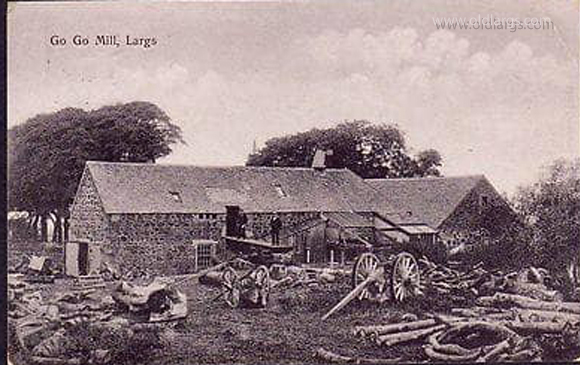
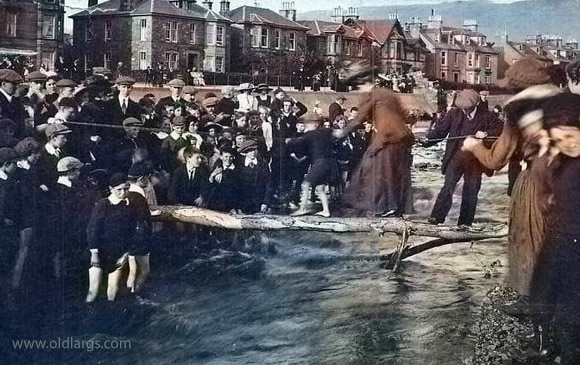
One of the many Gogo Burn Mills. Date of this photo is unknown.
A temporary bridge over the GoGo. We will never know if this poor lady made it to the other side.
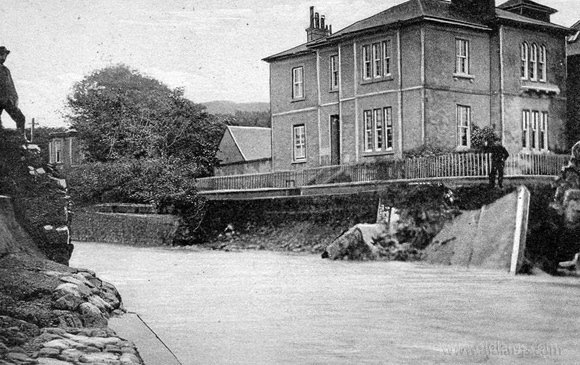
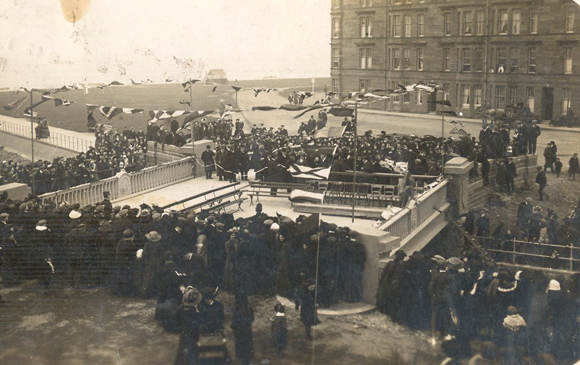
The aftermath of the 20th August 1910 storm which destroyed the old bridge.
The opening of the new bridge on the 30th March 1911
Who was Sir Thomas Makdougall Brisbane ?
Thomas Brisbane, son of Sir Thomas Brisbane and Dame Eleanora Brisbane, was born at Brisbane House Largs in 1773. He received a good general education at the University of Edinburgh
before taking up a commission in the army at the age of 17.
He saw active service in both Europe and the West Indies. After one disastrous Atlantic crossing with his regiment in 1795 his ship ended up off the coast of Africa rather than the West Indies.
As a result, Brisbane resolved to learn more about astronomy so he could navigate at sea. Whilst on temporary leave from the army between 1805 and 1811, he built an observatory at Brisbane House in 1808, which was only the second one in Scotland at the time. His interest in astronomy became a lifelong pursuit, and his subsequent observations and studies made a significant contribution to the advances in navigation which took place over the next hundred years.In November 1819 he married Anna Maria Hay Makdougall of Makerstoun, Roxburghshire, Scotland. On his father-in-law's death, Brisbane assumed the additional surname becoming Makdougall Brisbane.
At the end of the Napoleonic Wars he sought employment which would allow him to continue his interest in astronomy and navigation. The new Sir Thomas Brisbane became the 6th Governor of New South Wales in 1821 and he immediately set about establishing a private observatory in the grounds of Government house at Parranatta, using much of the equipment from his Largs observatory. The town of Brisbane, the Brisbane River, and the Sir Thomas Brisbane Planetarium were all named after him. Brisbane left Australia in December 1825 and returned to Largs. He settled down to the life of a country gentleman and took an interest in his estate, his regiment and astronomy.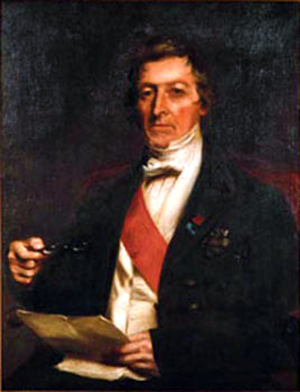
He built his third observatory
at his wife's family estate at Makerstoun, near Kelso, and employed a team of scientists throughout the
1840s. He died in 1860 and was buried in the Brisbane Vault in the graveyard next to the Skelmorlie Aisle.
The Brisbane family home was built in 1636 by the Kelso family and acquired by the Brisbanes in 1671. It remained occupied by the Brisbane family until 1932. The house was put on the market but remained unsold and unoccupied until it was purchased by John McKellar Robertson of Noddsdale Largs in 1938. It remained derelict until it was demolished in 1942 by No. 3 Commando Unit as an training exercise.
All that remains today are some wall fragments and the cellar. However the front door of Brisbane House has been preserved. In 1939 much of the buildings timber was removed and stored in a local firm's workshop. In 1958 the Provost sent the door to Australia and it is now on display in Brisbane City Hall as part of a Sir Thomas Makdougall Brisbane exhibition.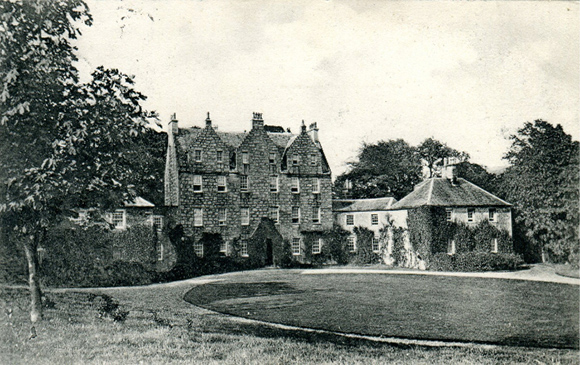
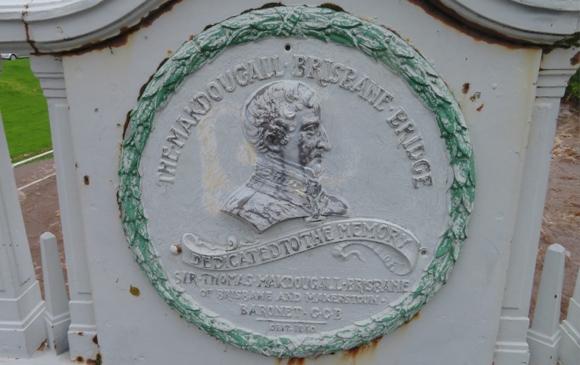
The image on the left is of Brisbane House at Brisbane Glen. Its front door now displayed at the Brisbane City Hall, The top right image is one of the plaques on the Thomas Makdougall Brisbane Bridge crossing the Gogo burn. This one depicts Sir Thomas. The plaque on the other side of the bridge depicts thee Battle of Largs. Sadly both looking rather the worse for wear due to over painting, rust and graffiti.
Weavers and their mills started appearing on the banks of the Gogo as early as the 1630s. The various mills along the length of the Gogo included saw mills, grain, lint, dye and wool mills. Most were powered straight from the waters of the Gogo.
The last surviving mill still standing is the The Gogo Mill which was built around 1633. The mill and its adjoining building can be found in the back yard of the Jewsons Building Store on Irvine Road, opposite to the entrance to Morrisions. John Osborne was a tenant here from 1671 - 1679. In thoses days the Gogo Mill was a saw mill and timber yard as a well as a grain mill. The mill wheel was powered by a pond fed by the Gogo called Gogoside lade. This is now the site of Millburn Gardens.The tenant in 1806 was John Beith and by 1834 it was occupied by Whiteford and Morris. From 1867 to 1907 John Johnstone was resident with his family. The mill wheel was dismantled in 1946 and can been seen at the very bottom left hand side of the photograph below. Later 3 generations of the Rodger family lived in the mill. They were potato merchants.
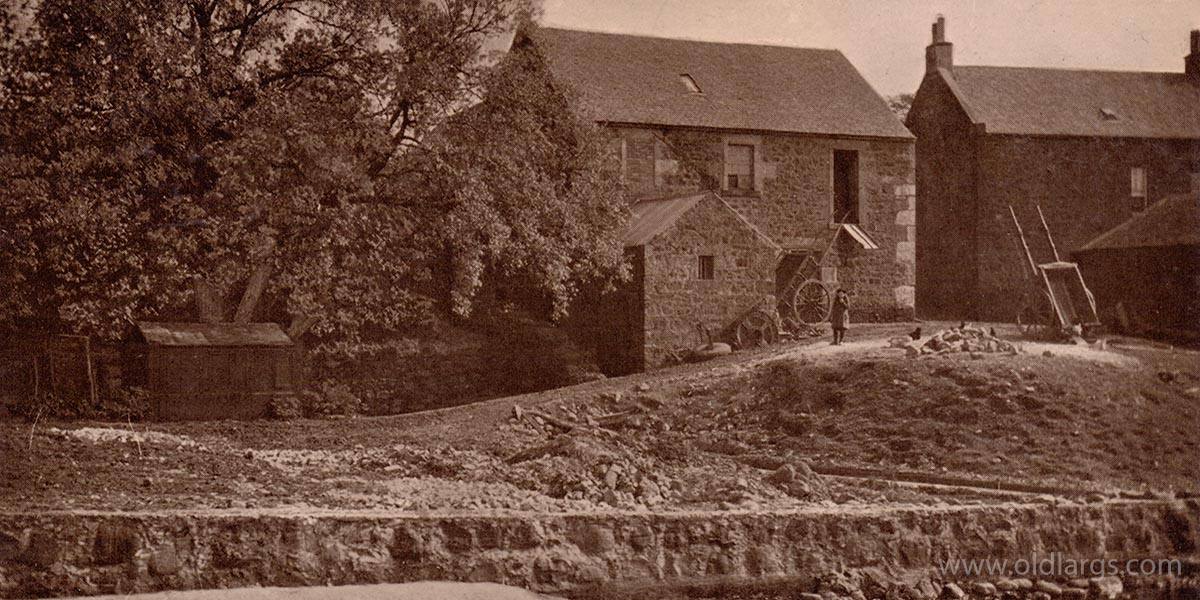
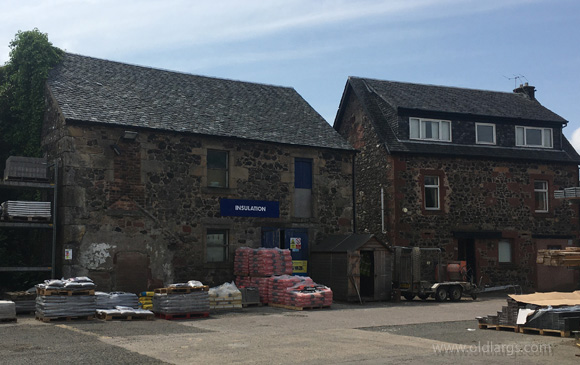
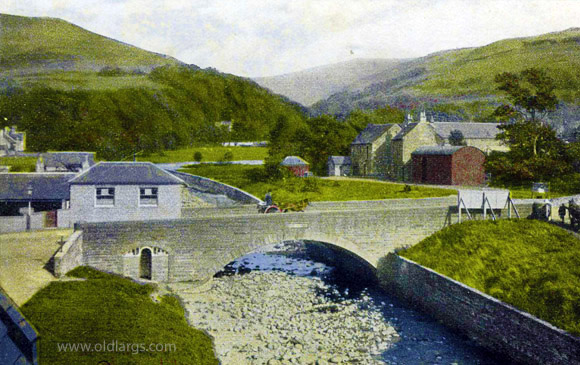
Still standing, the Gogo Mill as it is today at Jewsons back yard.
Another view of the Mill. On the left is the old council works depot building.
Opposite the Gogo Mill, in Waterside Street, was a group of building's which were used as McMillan's distillery. The distillery water supply came from an aqueduct which crossed the Gogo burn beside the Mill on the opposite bank. The distillery lasted until the early 1800s. When distilling stopped the aquiduct was kept in use and the water was diverted down the main street to flush the open sewers that ran down the Main Street.
Further down located between the Irvine Road bridge and the Railway bridge was the old Largs Jail. Largs Jail was known as the Vault house and in 1817 sections of the house were used as a prison or jail. By 1848 it was ran by the prison board Ayr and by 1908 it was referred to as Victoria Place. The jail was used until the new Police station and jail was built in 1871 in School Street. The old Jail building was used as flats for many years. Until it was demolished the bottom flat bedroom building had the original bars on the back window, beside the old stone stair leading down to the Gogo Burn where residents hung out their washing. Now the site of a newer modern block of flats.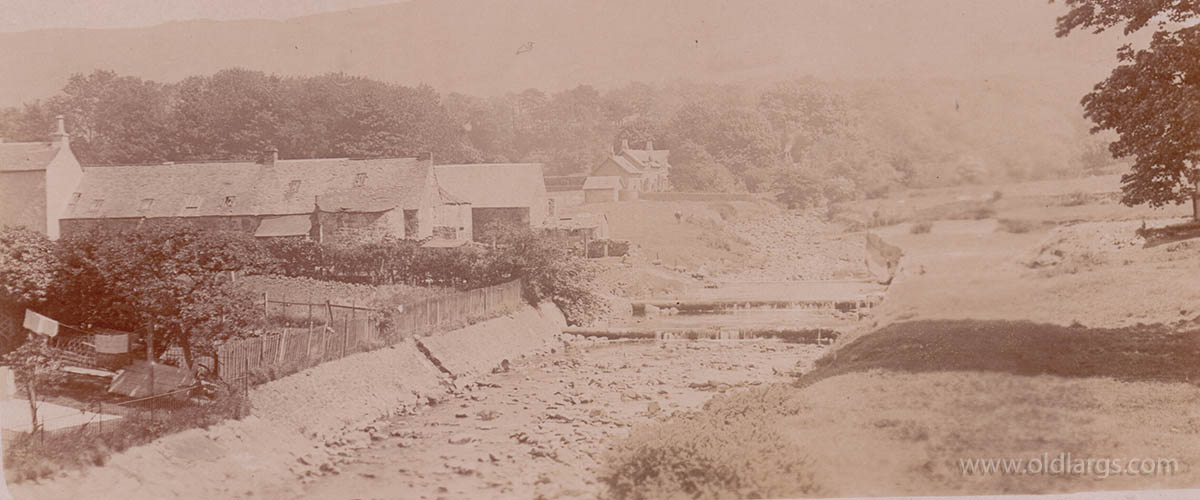
Some of the buildings shown on the North side of the Gogo were the location of McMillan's distillery.
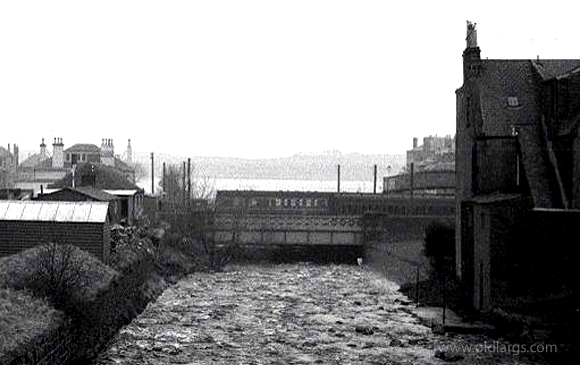
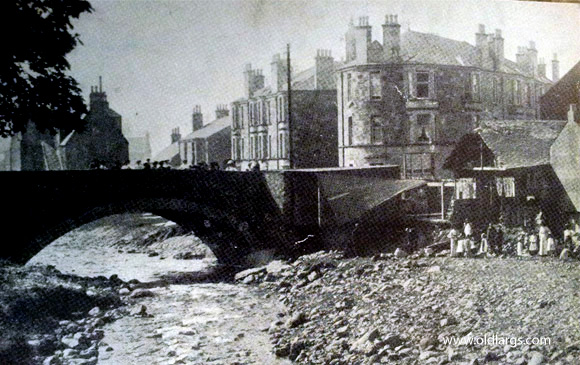
Loking down from Irvine Road, the old Largs jail on the right.
The old Largs jail can be seen on the right hand side of this photo. The jail can be seen across the bridge on the left.
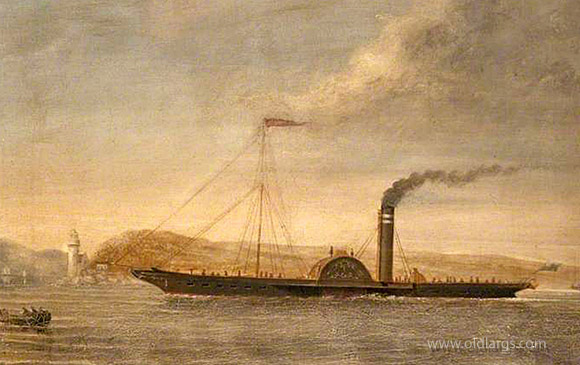
The Gogo Shipwreck
In 1855 Largs witnessed its first sea drama with the PS Mars going aground at the mouth of the Gogo Burn. Her passengers had to be brought ashore in carts.It was the morning of April 10 1855 that the Mars, built 10 years previously for the McKellar’s Largs and Millport fleet, left in very stormy weather, and upon approaching Largs her paddle-shaft snapped. Sails were hoisted but the gale was so high that they blew away, and she was driven ashore at the Gogo Burn.
Everyone on board the PS Mars managed to leave the vessel, and within a couple of minutes, the Mars had gone completely to pieces and scarcely anything of her was to be seen. The wrecked vessel was later put up for auction but did not receive any buyers as most of the wreck had been scattered several miles around the coast.